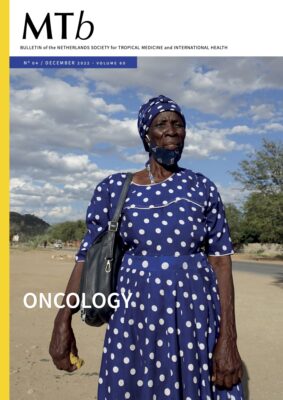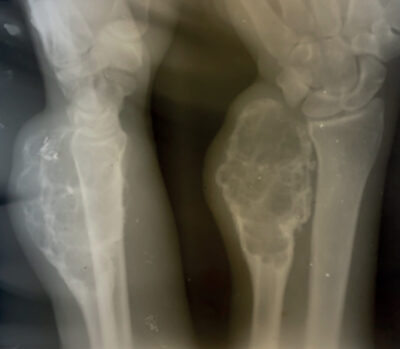
Oncology
Editorial
Clearly there are important differences between oncology in high income countries (HICs) and low-and-middle income countries (LMICs), both from a public health perspective (different epidemiology and risk factors), as well as from a clinical perspective (limited diagnostic and therapeutic options). The best example is the impact of the HIV epidemic that hit Africa hard in the 1990s and overwhelmed the already stretched health services. It brought with it not only a large burden of seriously ill patients but also a spectrum of malignancies that were either new, more serious or both. Kaposi’s sarcoma (KS) is and was the most frequently occurring cancer; while not new, the HIV associated type is much more common and more aggressive. In addition to well known risk factors such as smoking, cancer may be caused by microbial agents (viruses, bacteria, and parasites); some of these agents exert an increased effect in HIV infection (HHV8, EBV, hepatitis B and C virus), but for other agents this is not the case, such as in Schistosomiasis haematobium infection; bladder carcinoma occurs after years of chronic infection that started in early childhood. S. haematobium is restricted to Africa. In Asia, cholangiocarcinoma (cancer of the biliary tract) is common – and associated with two common parasites in this region (Opisthorchus viverrini and Clonorchis sinensis) as a risk factor, indicating that worldwide and regional differences exist because of environmental and other epidemiological factors that are not always well understood. Indeed, HTLV-1 infection as a cause of adult-T-cell leukaemia/lymphoma is well reported, with high prevalence in South America (Peru, Ecuador) and also in Japan; the reason for this is unclear. A well-known pathogen in HICs is Helicobacter pylori, that is well-recognized as a causative agent in upper gastrointestinal tract malignancies; research in LMICs is limited but it has been shown to be common; e.g. in Rwanda which offers options for prevention by treatment. Less well known are special pathogens, such as aflatoxin causing liver cancer, and cancers that may be caused by contagion. In terms of management, making a proper diagnosis is essential. Whereas for KS in the skin or oral mucosa this is usually a clinical diagnosis, for gastrointestinal malignancies (including KS) gastroscopy is required. This requires the establishment of a gastroscopy service that needs training and sustaining; it also requires a critical number of medical doctors who are interested in being trained. The diagnosis of H. pylori can already be done with a rapid diagnostic test; the diagnosis of cervical carcinoma may also become easier using vaginal swab for early detection of Human Papilloma virus (HPV) by PCR, with may lead to a better outcome. Also here, it takes several motivated people to take things further; based on their experience, a number of doctors explain why they became interested in gyneoncology with a focus on LMICs. Clearly, prevention is key and there are vaccines for HBV and HPV. Mass (targeted) drug treatment is applied for Schistosomiasis. In addition to research, training of local staff in LMICs is essential, not only in the home country but also through fellowships in HICs to experience oncology services at the highest level to be transferred to the home country, a perfect example for a global collaboration. In conclusion, oncology in a tropical environment has specific characteristics in terms of risk factors that include microbiological agents; while this means that targeted interventions may reduce the risk for the individual and the population, differences in epidemiology require different approaches in each region. Patient care has improved over the years, which is in many cases the result of locally performed research and successful bilateral collaborations.
Ed Zijlstra
Imke Duijf






















































